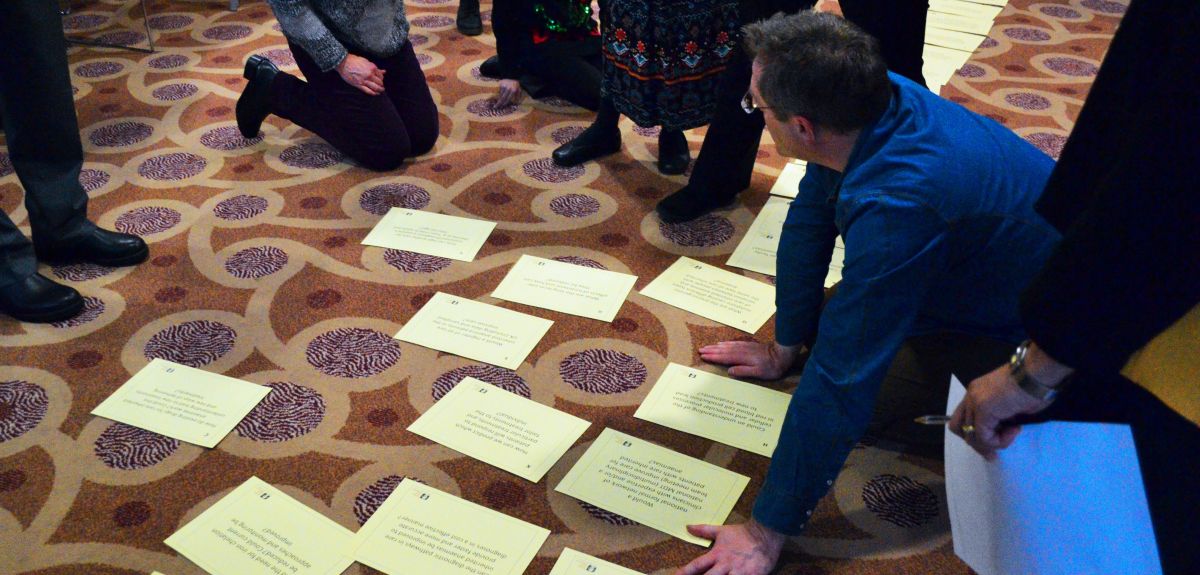
What researchers can learn from patients
To mark rare disease day, Dr Noemi Roy talks about a two year project working with patients with rare forms of anaemia, and how she hopes this will translate into research in this area.
Rare Disease Day. It’s only one day, right? Like yesterday was International Polar Bear day, and tomorrow will be Employee Appreciation Day. Now, I have nothing against polar bears, and I’m all for appreciating employees. But let’s spend more than a day thinking about rare diseases. Rare diseases sound, well, rare, and “nothing to do with me, really.”
In fact, there are “over 6,000 rare diseases that affect over 300 million people worldwide”. This works out to 1 in 17 people being affected by a rare disease at some point in their life.
I am a researcher at the MRC Weatherall Institute of Molecular Medicine at the University of Oxford, but also a clinician looking after patients with rare inherited anaemias. These patients are born with a genetic abnormality that means they either can’t make red blood cells at all, can’t make enough normal ones, or their red blood cells are fragile and get destroyed too early. Not enough red blood cells means not enough oxygen to the body. Some patients suffer with fatigue and weakness and can’t keep up with their peers in normal daily activities, while others need blood transfusions. At the worst end of the spectrum are patients whose lives depend on blood transfusions every three weeks from birth.
Research into rare anaemias (as with all rare diseases) is poorly funded. Furthermore, patients’ opinions about what aspect of their condition warrants most urgent research are not heard. Mostly because nobody has asked them, or perhaps no one has thought to ask. Perhaps there is worry that the issues raised may be inconvenient for doctors and researchers alike. Whether conditions are common or rare, the research agenda (the hypotheses being tested) is set by the researchers themselves or pharmaceutical companies. All on behalf of the patients, of course. But doing things on behalf of the patients is no longer acceptable- we need to do things with patients.
Hard work
There are a lot of valid concerns raised about asking patients for what they think the research questions should be for their condition. Which patients are we asking exactly? How do we know they are representative of all the patients with that condition? How will patients know enough about fundamental science to even raise some critical issues that warrant research for new therapies to be discovered?
Even so, a nation-wide survey into topics identified by patients as being priorities topics for conditions they live day with everyday out has yielded important results. One method of carrying this out is via a James Lind alliance Priority Setting partnership. These partnerships have been used to gather patient-driven research priorities in over 90 conditions ranging from acne, through to depression, stillbirths and schizophrenia. Interestingly, a common theme in all the results from these surveys is that patients repeatedly say that they want further research into how their quality of life can be improved and symptoms controlled, rather than research on just finding a new cure.
In 2016, we set about carrying out a James Lind Alliance Priority Setting Partnership survey into rare inherited anaemias.
I won’t lie, it is hard work. It is very time consuming and because it’s done in partnership with patients, it follows a different format compared to a group of doctors getting together and doing the same thing on their own.
But the whole point is that the end result is different from what it would be if it was doctor-driven. Not only different, but better.
We put together a steering committee of patients, patient support groups, carers, charities, doctors and researchers, and then ran a nation-wide survey asking patients and doctors what they thought were the key questions that should feature on the research agenda. Once we received about 500 answers, we sifted through them to remove anything out of scope and grouped similar questions together. This left us with 75 questions.
We then ran another, separate survey asking people to prioritise all 75 of these research priorities, ending up with 25 key questions. Our project culminated in a one-day workshop where patients, carers, charity representatives and doctors discussed and debated the merits of all 25 questions and came up with a mutually agreed Top 10.
Very nice, beautiful. A lovely list. Developed with patients. We can feel good about ourselves.
But what next? Well, research money needs to be funnelled into projects that address these topics. Part of that will rely on the funding bodies preferentially giving money to projects that tackle these questions. Part of that will depend on charities and patient organisations fundraising specifically for these questions to be answered.
And part of that will result from a change in culture. Because everyone who participated in this project came out a different person. During the 2 years working together and at the final workshop, I heard doctors telling patients they hadn’t realised how important some symptoms were to their lives, and I saw doctors change their opinions after listening to patients. Not only in a specific scenario, but more generally in their attitude to patient involvement in research. Likewise I saw patients grow in confidence and start to believe that they can change the way things are done and the path of research in the future.
I will end with a patient’s voice- someone who was part of this two-year process:
'I can help future generations and raise the profile of rare anaemias. This work makes me feel like I have a part to play and that even though you’ve got a rare condition, you can still make a difference' - Rachel